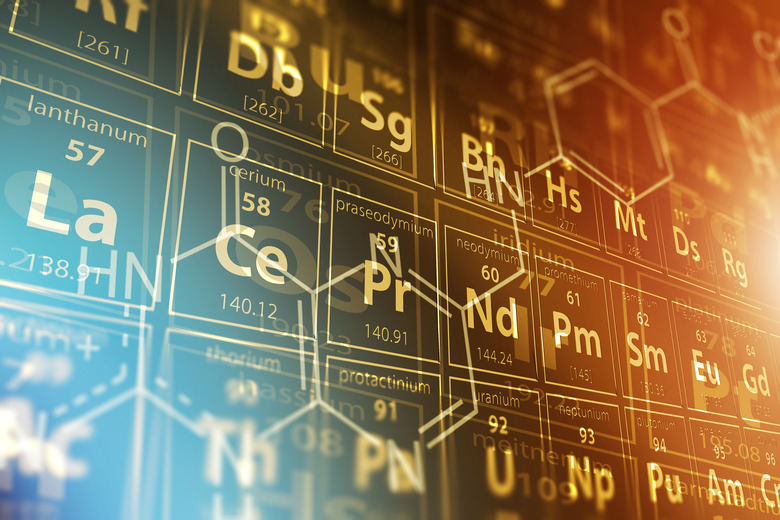How To Determine The Charge Of An Atom
Determining the charge of an atom is easy in most cases but not all. Atoms are held together by the electromagnetic forces between the protons in the nucleus and the electrons surrounding it, and this means that most of the time there isn't actually much to work out.
But when elements lose or gain an electron (or more than one) and become ions, things get a little more complicated and you have to consult a periodic table to find out what the charge is likely to be.
The Charge of Elements
The Charge of Elements
In their standard forms, elements have no net charge. The number of positively-charged protons is perfectly balanced by the number of negatively-charged electrons, and the charges on each are opposite but with equal magnitude.
This makes sense as the "natural" state of an atom because if they held a net charge, they would be much more reactive and likely wouldn't remain in the same state for very long before interacting with something. So in most cases the charge of an atom is the same: zero.
Understanding Ions
Understanding Ions
Ions are the name for atoms that have gained or lost one or more electrons, leaving them with a net charge. For atoms that lose an electron, they gain a positive charge and become cations.
For atoms that gain an electron, they take on a net negative charge and become anions. These are just names for the positive and negatively charged ions, to help distinguish them from neutral atoms and from each other.
The important thing to understand about ions is that they are the only types of atom with a net charge. For convenience, chemists (and scientists in general in most cases) take the charge of an electron to be −1, while a proton has a charge of +1.
Really these are very specific amounts of charge, ± 1.602 × 10-19 coulombs, but working with tiny quantities like this is rarely necessary. For most calculations, you treat this as a "unit" of charge (sometimes given the symbol e) and everything is much simpler.
Periodic Table Charges for Ions
Periodic Table Charges for Ions
The position of an element on the periodic table (see Resources) tells you the type of ions it will form, with the elements on the right forming anions (negative charge) and those further to the left forming cations (positive charge).
This is because the periodic table is arranged according to the number of electrons in the outermost "shell" of an atom, and ions are formed with atoms either lose or gain electrons so that their outer shells are full. Each "group" of the periodic table is associated with a different ion charge.
The first two groups have elements with only one or two electrons in their outer shells, group 1 and 2 respectively. These lose electrons to gain a charge of +1 or +2, and group 13 elements have three electrons in their outer shell and form ions with a +3 charge.
Group 14 elements have four electrons in their outer shells, and usually bond covalently, but they would gain a +4 charge if they formed an ion. Groups 15, 16 and 17 have 5, 6 and 7 electrons in their outer shells and gain electrons to get ionic charges of −3, −2 and −1, respectively.
The other elements (from the middle groups of the table) aren't as easy to classify because their electronic structures vary in a slightly more complicated way.
However, for example, silver can form an ion with +1 charge, whereas zinc and cadmium can gain a +2 charge. To find out whether an atom in these groups form ions more generally and determine their charges, the best thing to do is directly look up the element you're interested in.
Cite This Article
MLA
Johnson, Lee. "How To Determine The Charge Of An Atom" sciencing.com, https://www.sciencing.com/determine-charge-atom-7843113/. 1 March 2020.
APA
Johnson, Lee. (2020, March 1). How To Determine The Charge Of An Atom. sciencing.com. Retrieved from https://www.sciencing.com/determine-charge-atom-7843113/
Chicago
Johnson, Lee. How To Determine The Charge Of An Atom last modified March 24, 2022. https://www.sciencing.com/determine-charge-atom-7843113/
